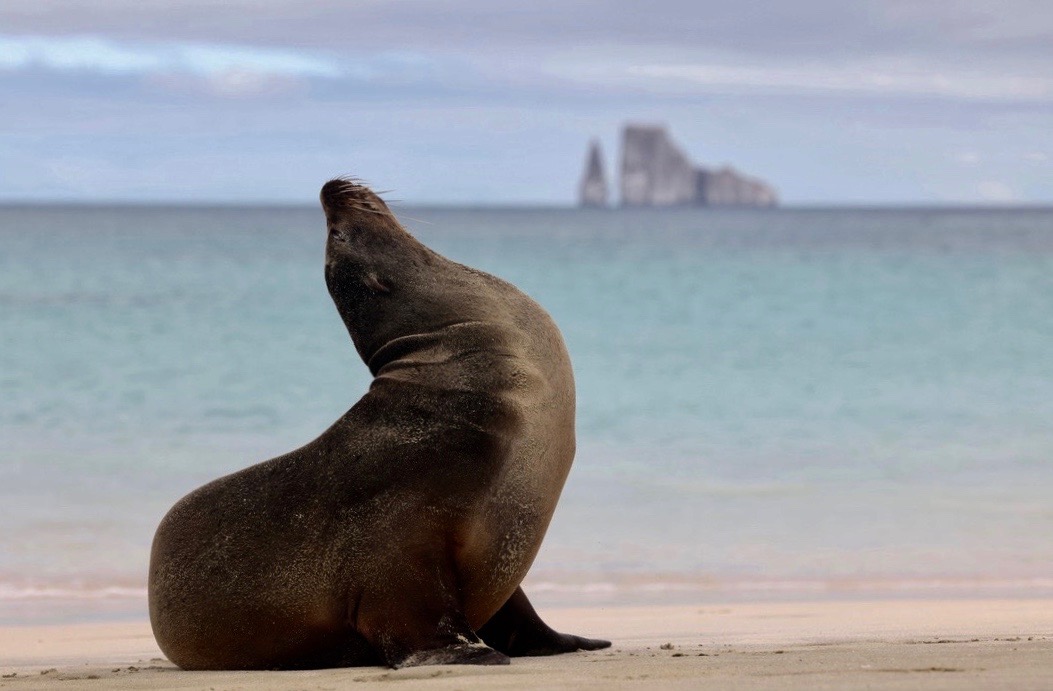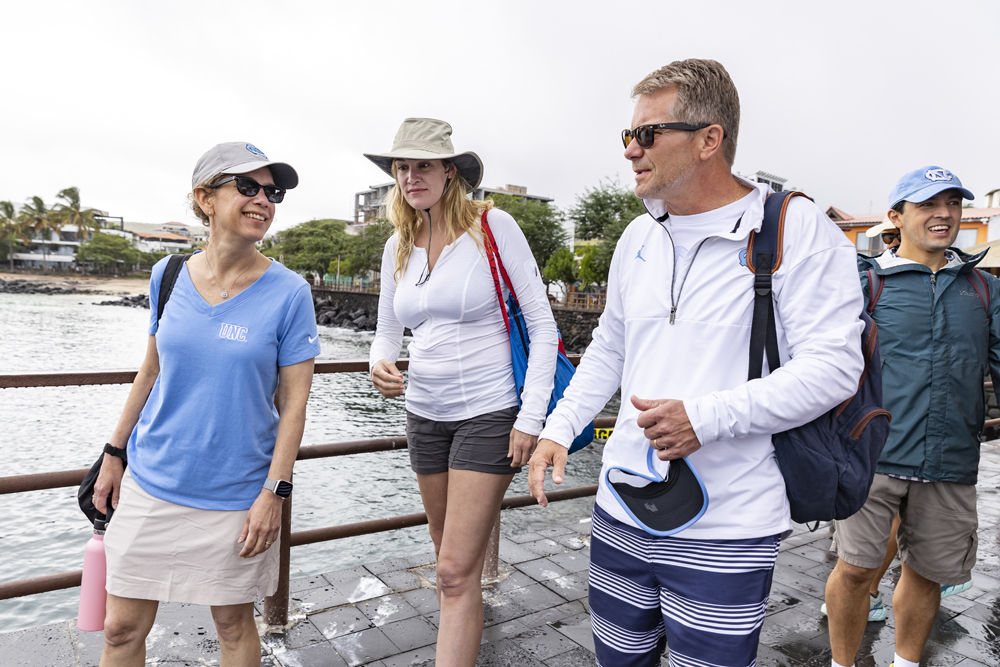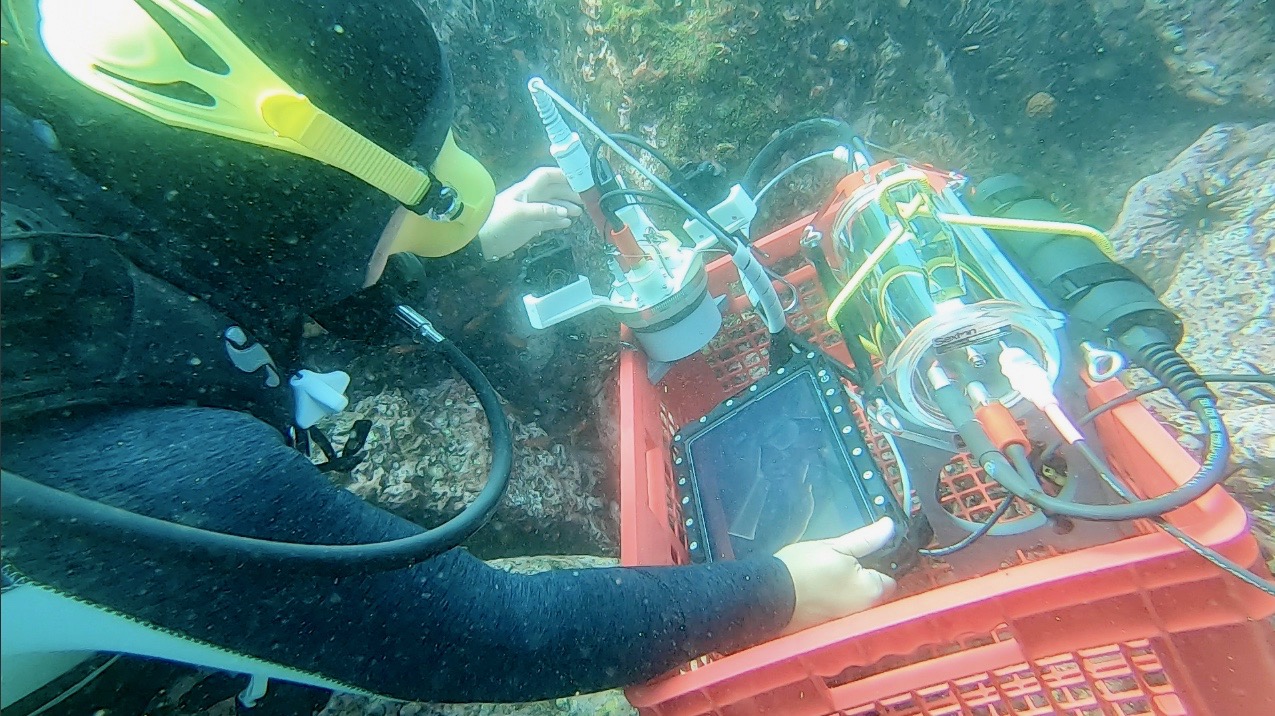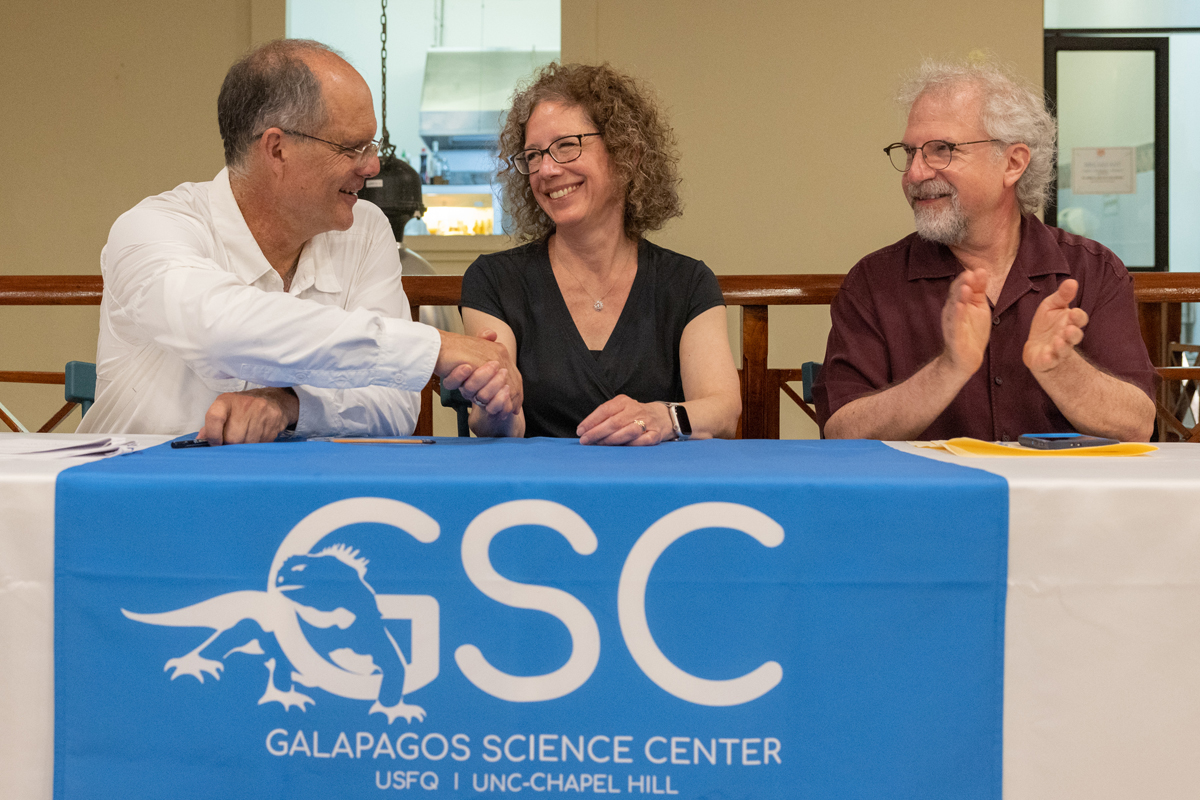
Carolina’s global research footprint boasts a diverse, innovative, and transformative impact. Our faculty are making exciting discoveries and sharing expertise that transcends geographic boundaries. I had the great fortune to travel with a Carolina delegation to celebrate the 10th anniversary of the Galapagos Science Center (GSC) — and the broader Universidad San Francisco de Quito (USFQ) – University of North Carolina at Chapel Hill Galapagos Islands Initiative — at the World Summit on Island Sustainability on San Cristóbal Island. Our delegation of scientists and campus leaders reveled in the rich evolutionary history of these islands made famous by Charles Darwin on the second voyage of the HMS Beagle in the early 1830s.
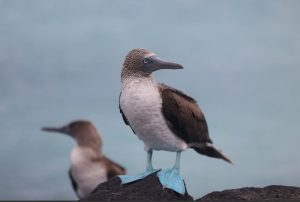
The 10-year UNC-USFQ partnership has yielded an extraordinary set of research projects that are producing tremendous results for the interdisciplinary science that is the hallmark of Galápagos research. None of which would be possible without our fantastic researchers, strong collaborations, and incredible ties to the local community and the Galápagos National Park. The strong sense of stewardship and responsibility evident at the GSC were every bit as impressive as the rigor and quality of the science conducted there.
Our delegation toured the 20,000-square-foot GSC facility, which houses four state-of-the-art laboratories, each with a dedicated research focus: terrestrial ecology, marine ecology and oceanography, data science and visualization, and microbiology.
We heard from Corbin Jones about the GSC biobank, which is preserving the genetic resources of existing biodiversity and from Jon Bruno about experimental marine biology research on algae. We visited a field site to see Gregory Lewbart, from North Carolina State University, conduct a health assessment on a green sea turtle that included collecting height, weight, blood measurements, and facial photographs that will be used for an artificial intelligence-based turtle facial identification project. Lewbart was able to process the turtle’s blood sample in the field (on the beach!) using an ingenious centrifuge adapted from a small fan.
We heard about exciting work led by Jill Stewart to trace antimicrobial resistance through different water sources, animals, and on to humans. And we learned about Gina Chowa’s work on intimate partner violence and her partnership with the community to build capacity for social work on the island. These are just a few examples of the diverse areas of science supported through the GSC.
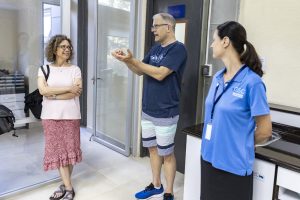
There are other areas of impact, such as the many student and postdoctoral researchers working in the GCS laboratories, and the students participating in UNC Study Abroad who are engaged in wonderful global opportunities and experiences. The Barcode Galapagos project engages the local community in citizen science to barcode the biodiversity of the islands. The Gills Club is an outreach program to engage girls in science and conservation through laboratory and field-based activities. Another example is a massive COVID vaccination campaign that successfully vaccinated adults across the Galápagos Islands.
The GSC was co-founded by Steve Walsh, distinguished emeritus professor of geography, and Carlos Mena, a professor of geography at USFQ and an adjunct professor of geography here at Carolina, who have nurtured the center’s research enterprise over the past 10 years. The campus center, the UNC Center for Galapagos Studies, is under new leadership with co-directors Amanda Thompson and Diego Riveros-Iregui who bring expertise in human biology and hydrology, respectively. Amanda is investigating the social and biological pathways linking water and food insecurity to chronic diseases and mental health. Diego is working at the intersection of watershed hydrology, ecohydrology, critical zone science, and land-atmosphere interactions. Diego and Amanda will take the GSC to even greater heights.
Work in the Galápagos Islands is approached through a rich and varied interdisciplinary and integrative perspective aimed at identifying the proper balance between the natural environment and the people who live in and visit these special places. The problems the Galapagos Science Center seeks to solve are complex, and they cannot be solved by a single scientist working in a narrow field. They require scientists from different disciplines, working together in teams — to fuse studies of the environment with studies of human and animal populations, their health and well-being, and their direct and indirect consequences — so that we may understand island ecosystems and the threats to their sustainability.
There are broader global implications of the research, as the lessons learned in the Galápagos will contribute to research efforts that can be applied to other ecosystems facing environmental challenges, such as North Carolina’s barrier islands. It was a truly impressive visit and an incredible example of research for local and global impact — the Carolina way.
